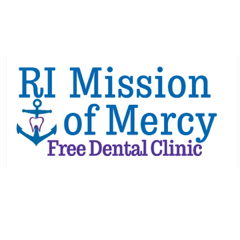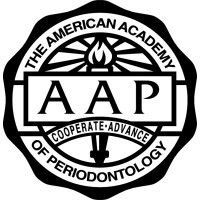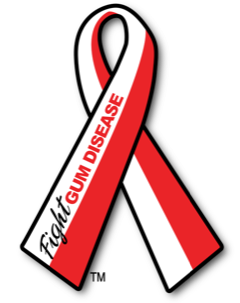Call us!
Innovative Periodontal Procedures for Dental Health
Implant Procedures
Dental implants are metal anchors that act as tooth root substitutes. They are surgically placed into the jawbone. Small posts are attached to the implant to provide stable anchors in the gums for replacement teeth.
For most patients, dental implant placement involves two surgical procedures. First, implants are placed within the jawbone. Healing time following surgery varies from person to person and is based on various factors, including the hardness of the bone. In some cases, implants may be restored immediately after they are placed.
In other cases, for two to six months following surgery, the implants are beneath the surface of the gums, gradually bonding with the jawbone. You should be able to wear temporary dentures and eat a soft diet during this time. At the same time, your restorative dentist designs the final bridgework or denture that will ultimately improve both function and aesthetics.
After the implant has bonded to the jawbone, a second smaller procedure is sometimes necessary to uncover the implants and attach a small healing collar. After two weeks, your general dentist will be able to start making your new teeth. An impression must be taken. Then, posts or attachments can be connected to the implant. The teeth replacements are then made over the posts or attachments. The entire procedure usually takes three to eight months. Most patients do not experience any disruption in their daily life.
Cost of Dental Implants
Several factors dictate the cost of dental implants. Some of these are:
- The location of the implant in the jaw
- Whether the bone has been resorbed and requires bone grafting
- Any other health conditions that might cause complications
- The cost of the actual implant and crown
- The doctor's experience and expertise
Placing a dental implant requires a number of steps, generally involving several professionals.
One of the most common surgical procedures involves making incisions around the tooth and pulling back the gum tissue slightly. This provides access to remove all plaque and calculus thoroughly. Irregularities of the bone caused by the disease are smoothed over, and the tissue is placed at a higher level around the tooth, closer to the bone. When the procedure is completed, “dissolving” sutures are used. You will need to be seen in 10-14 days to remove any remaining sutures and evaluate your healing.
By moving the gum closer to the bone, the pockets will be reduced or eliminated. However, the tooth can appear longer, and the spaces between the teeth will be larger. In cosmetic areas, other treatment options may be considered depending on how much gum tissue is exposed (“Smile Line”).
Traditionally, gum disease is treated by eliminating the gum pockets by trimming away the infected gum tissue and re-contouring the uneven bone tissue. Although this is still an effective way of treating gum disease, new and more sophisticated procedures are used routinely today.
Guided tissue bone regeneration regenerates the previously lost gum and bone tissue. Most techniques utilize membranes that are inserted over the bone defects. Some of these membranes are bio-absorbable, and some require removal. Other regenerative procedures involve the use of bioactive gels.
An unerupted or partially erupted tooth so positioned that complete eruption is unlikely would require a surgical uncovering procedure. The most commonly found tooth requiring this procedure is the maxillary (upper) canines. During orthodontic treatment, if these unerupted teeth do not erupt in a timely manner, your orthodontist will routinely ask for a periodontal evaluation for possible surgical uncovering. A simple incision is made to expose the crown of the tooth, and a bracket and small chain are normally bonded to the tooth to enable the orthodontist to then place a wire attachment to the chain and slowly bring the unerupted tooth into normal position.
Crown lengthening (or crown exposure) is required when your tooth needs a new crown or other restoration. The edge of that restoration is deep below the gum tissue and not accessible. It is also usually too close to the bone or below the bone.
The procedure involves adjusting the level of the gum tissue and bone around the tooth in question to create a new gum-to–tooth relationship. This allows us to reach the edge of the restoration, ensuring a proper fit to the tooth. It should also provide enough tooth structure so the new restoration will not come loose in the future. This allows you to clean the edge of the restoration when you brush and floss to prevent decay and gum disease. The procedure takes approximately one hour.
When the procedure is completed, sutures and a protective bandage are placed to help secure the new gum-to-tooth relationship. You will need to be seen in one or two weeks to remove the sutures and evaluate your healing.
Gingival Grafting
A gingival graft (also called gum graft or periodontal plastic surgery) is a generic name for any of a number of surgical periodontal procedures whose combined aim is to cover an area of exposed tooth root surface with grafted oral tissue. The covering of exposed root surfaces accomplishes a number of objectives: the prevention of further root exposure decreased or eliminated sensitivity, decreased susceptibility to root caries, and cosmetic improvement. These procedures are usually performed by a dental specialist in the field of gingival tissue, known as a periodontist.
Specific grafting procedures include:
A subepithelial connective tissue graft takes tissue from under healthy gum tissue in the palate and may be placed in the area of gum recession. This procedure has the advantage of excellent predictability of root coverage and decreased pain at the palatal donor site compared to the free gingival graft. The subepithelial connective tissue graft is a very common procedure for covering exposed roots.
A free gingival graft is a dental procedure where a small layer of tissue is removed from the palate of the patient's mouth and then relocated to the site of gum recession. It is sutured (stitched) into place and will serve to protect the exposed root as living tissue. The donor site will heal over some time without damage. This procedure is often used to increase the thickness of very thin gum tissue. There are also donor tissue grafting materials that can be used in conjunction with this procedure. By using donor tissue grafting, a layer of tissue would not need to be removed from the palate.
Frenectomy
A frenum is a naturally occurring muscle attachment, normally seen between the front teeth (either upper or lower). It connects the inner aspect of the lip with the gum. A lack of attached gingiva, in conjunction with a high (closer to the biting surface) frenum attachment, which exaggerates the pull on the gum margin, can result in recession. Additionally, an excessively large frenum can prevent the teeth from coming together, resulting in a gap between the front teeth. If pulling is seen or the frenum is too large to allow the teeth to come together, the frenum is surgically released from the gum with a Frenectomy. Often, a gingival graft is added to re-establish an adequate amount of attached gingiva.
When Orthodontic treatment is planned or initiated, the removal of an abnormal frenum, with or without a gingival graft, can increase stability and improve the success of the final orthodontic result.
Scaling and Root Planing
The initial stage of treatment is usually a thorough cleaning that may include scaling to remove plaque and tartar deposits beneath the gum line. The tooth roots may also be planed to smooth the root surface, allowing the gum tissue to heal and reattach to the tooth. In some cases, the occlusion (bite) may require adjustment.
Antibiotics or irrigation with anti-microbials (chemical agents or mouth rinses) may be recommended to help control the growth of bacteria that create toxins and cause periodontitis. In some cases, Dr. Broderick, Kleinbaum, or Fertik may place antibiotic gels in the periodontal pockets after scaling and planing. This may be done to control infection and to encourage normal healing.
When deep pockets between teeth and gums are present, it is difficult to remove plaque and tartar thoroughly. Patients can seldom, if ever, keep these pockets clean and free of plaque. Consequently, surgery may be needed to restore periodontal health or repair damage that has occurred.
We’re only a phone call away! Call (401) 274-2600 and let us know how we can help.
PROVIDENCE LOCATION
Providence Phone: (401) 274-2600
Email: office@periodonticsri.com
Providence Address:
167 Gano Street
Providence, RI 02906
CUMBERLAND LOCATION
Cumberland Phone: (401) 658-2121
Email: office@periodonticsri.com
Cumberland Address:
175 Nate Whipple Hwy
Cumberland, RI 02864
CUMBERLAND LOCATION
Cumberland Phone: (401) 658-2121
Email: office@periodonticsri.com
Cumberland Address:
175 Nate Whipple Hwy
Cumberland, RI 02864






